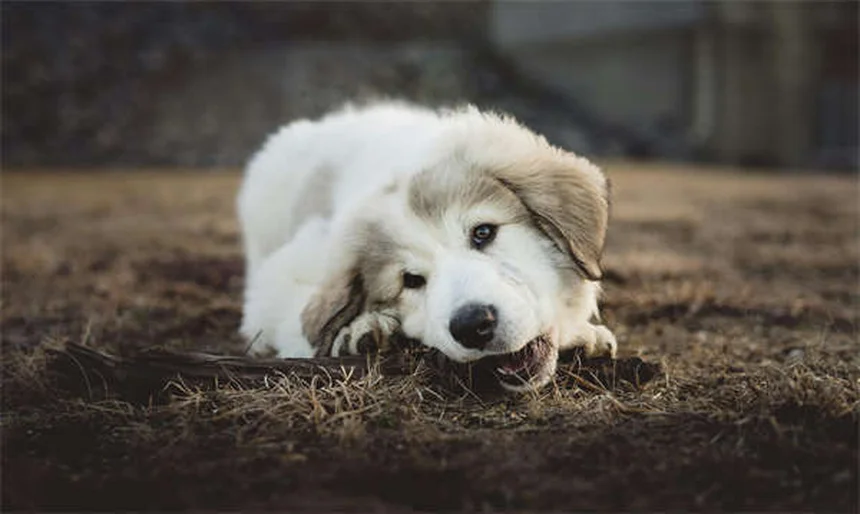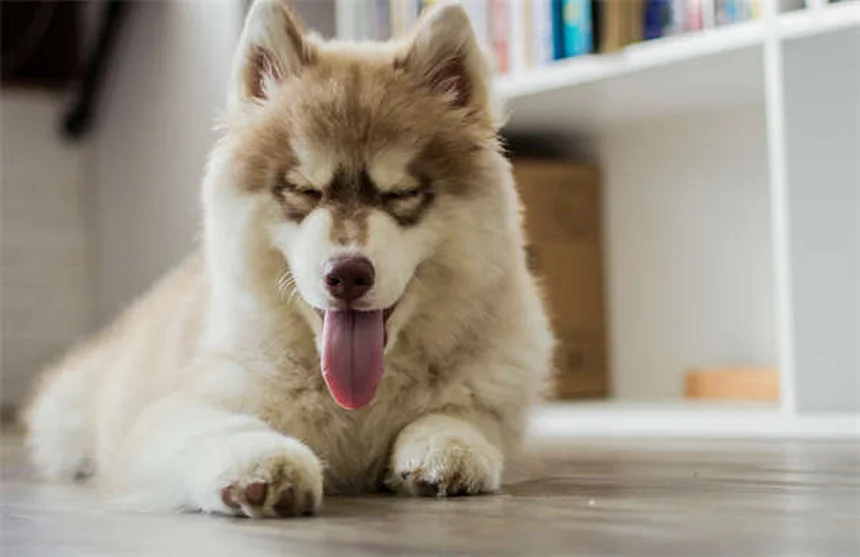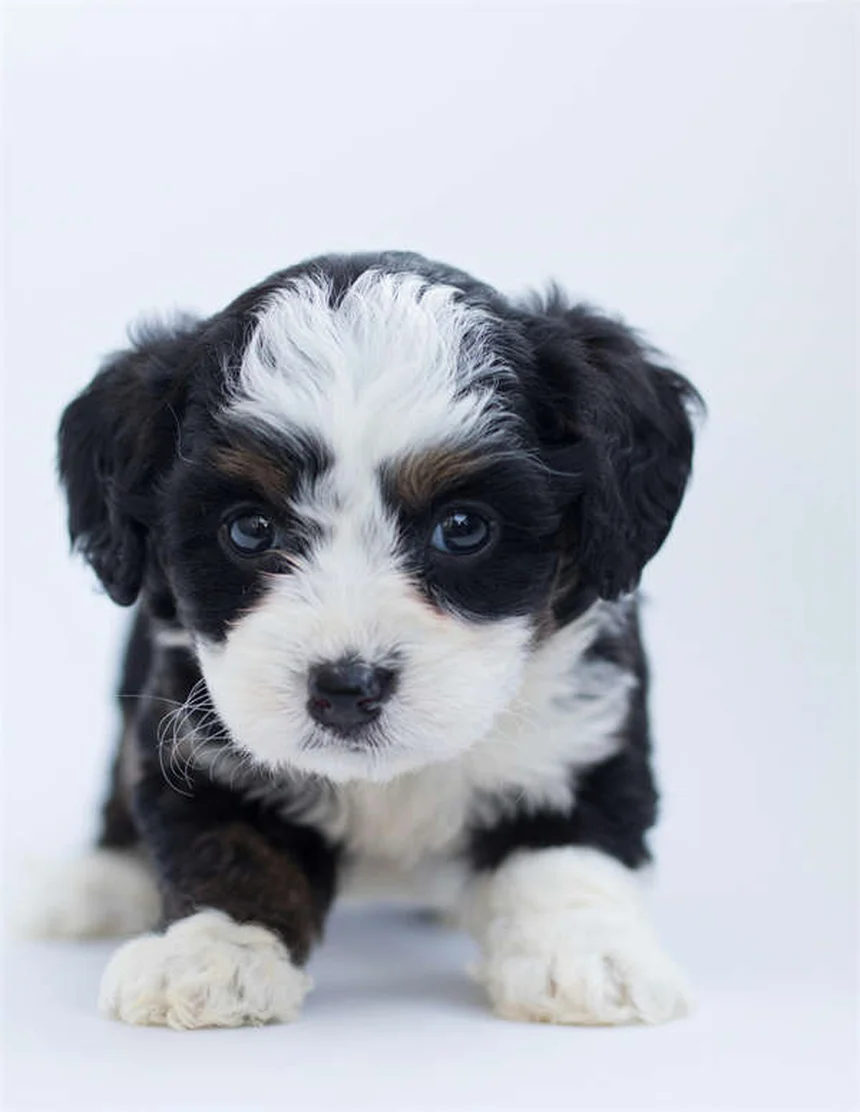Advertisement
What makes the Kiger Mustang so special? The answer is simple: these horses are living pieces of American history with unique Spanish ancestry you won't find in other mustangs. I've been studying horse breeds for years, and let me tell you - Kiger Mustangs are the real deal. They're not just beautiful (though their small heads and high-set eyes are stunning), they're also incredibly intelligent and willing workers. What really blows my mind is how Ron Harding discovered this nearly extinct bloodline in Oregon back in 1977 and saved it from disappearing forever. Today, there are probably fewer Kiger Mustangs than giant pandas - that's how rare they are! Whether you're a horse enthusiast or just love American heritage, you'll want to keep reading to discover why this breed deserves our attention and protection.
E.g. :Why Do Cats Do Weird Things? 7 Bizarre Behaviors Explained
Advertisement
- 1、Meet the Kiger Mustang: America's Hidden Gem
- 2、Digging Into Their Fascinating History
- 3、Kiger Mustangs vs. Other Mustangs: Spot the Difference
- 4、Why Should You Care About Kiger Mustangs?
- 5、Getting to Know Their Unique Traits
- 6、Where Can You See Kiger Mustangs Today?
- 7、The Future of Kiger Mustangs
- 8、The Kiger Mustang's Impact on Modern Horse Breeding
- 9、Kiger Mustangs in Competitive Sports
- 10、The Economics of Kiger Mustang Ownership
- 11、Kiger Mustangs in Popular Culture
- 12、Training Tips from Kiger Experts
- 13、Kiger Mustangs as Therapy Animals
- 14、FAQs
Meet the Kiger Mustang: America's Hidden Gem
Let me introduce you to one of the coolest horses you've probably never heard of - the Kiger Mustang. These beauties are like the vintage sports cars of the horse world - rare, stylish, and packed with history. Originally from Oregon, they're basically living pieces of American heritage.
What Makes Kiger Mustangs Special?
Ever seen a horse that looks like it stepped out of an old Spanish painting? That's the Kiger Mustang for you. They've got this unique look that makes them stand out in any herd.
Their appearance is seriously striking - small heads with high-set eyes that give them an almost exotic look. Picture this: small curved ears, an arched muscular neck, and a compact body that just screams athleticism. They typically stand between 14 to 15 hands tall (that's 56-60 inches for those who don't speak "horse").
Personality Plus: Why Everyone Loves Them
Now, here's where things get really interesting. These aren't just pretty faces - they've got brains to match!
You know how some horses can be stubborn? Not Kiger Mustangs. They're like the honor students of the horse world - eager to learn, quick to obey, and absolutely brilliant with cattle. Ranchers love them because they're basically born cowboys.
Digging Into Their Fascinating History
 Photos provided by pixabay
Photos provided by pixabay
From Spanish Ships to Oregon Trails
Let's take a quick history trip. Back when Europeans first came to America, Spanish horses were everywhere. Fast forward a few centuries, and these wild beauties were disappearing fast - hunted, captured, or just mixed with other breeds.
But here's the cool part: in 1977, a guy named Ron Harding found this special herd in Oregon's Beaty Butte Range. He took one look and thought, "Wait a minute... these aren't your average mustangs!" Turns out, they were direct descendants of those original Spanish horses.
The Great Mustang Rescue Mission
Ron and his buddy Chris Vosler didn't just say "cool horses" and walk away. They went full-on horse conservationists!
They carefully protected the herd, making sure no other breeds mixed in. It was like running an exclusive equine country club. By 1988, they'd even started the Kiger Mesteflo Association to keep track of bloodlines. Talk about dedication!
Kiger Mustangs vs. Other Mustangs: Spot the Difference
Not all mustangs are created equal. Check out how Kigers stack up against your average mustang:
| Feature | Kiger Mustang | Regular Mustang |
|---|---|---|
| Height | 14-15 hands | 13-16 hands |
| Build | More refined, Spanish look | Varies widely |
| Temperament | Exceptionally willing | Often more independent |
| Rarity | Very rare | Relatively common |
Why Should You Care About Kiger Mustangs?
Living History Lessons
Think about this: when you look at a Kiger Mustang, you're basically looking at a living, breathing piece of 16th century Spain. How many animals can claim that?
Their bloodlines connect directly to those first Spanish horses that changed the course of American history. Native Americans got horses from these ancestors, pioneers rode them westward - it's all connected to these gorgeous animals.
 Photos provided by pixabay
Photos provided by pixabay
From Spanish Ships to Oregon Trails
Here's something that might surprise you: there are probably fewer Kiger Mustangs today than there are giant pandas in the world. That's how special they are!
Organizations like the Kiger Mesteflo Association work hard to protect these horses, but they need more people to care. Every time someone learns about Kigers, it helps keep their legacy alive.
Getting to Know Their Unique Traits
Built for Success
Let's geek out about their physical traits for a second. Their small heads aren't just cute - they're aerodynamic! Those high-set eyes? Perfect for keeping watch while grazing. Every feature has a purpose.
And their compact bodies make them incredibly agile. You should see them work cattle - it's like watching a ballet with hooves. They can turn on a dime and stop faster than you can say "whoa!"
Brains and Beauty Combined
Ever met a horse that actually seems to enjoy training? That's the Kiger Mustang experience.
They're not just obedient - they're enthusiastic about learning new things. Trainers often say it's like they're actively trying to figure out what you want. This intelligence makes them perfect for everything from ranch work to competitive riding.
Where Can You See Kiger Mustangs Today?
 Photos provided by pixabay
Photos provided by pixabay
From Spanish Ships to Oregon Trails
If you want to see these amazing horses in person, Oregon's the place to be. Several herds still roam protected areas, and some ranchers specialize in breeding them.
Fun fact: there are actually guided tours where you can observe wild Kiger Mustangs in their natural habitat. It's like going on safari, but with cowboys instead of lions!
Ownership Considerations
Now, I know what you're thinking - "I want one!" But hold your horses (pun intended).
Did you know that owning a Kiger Mustang is a big responsibility? They're not like adopting a golden retriever. You'll need proper facilities, experience, and ideally some connections to the Kiger Mustang community. But for the right person, it's absolutely worth it.
The Future of Kiger Mustangs
Looking ahead, these horses face both challenges and opportunities. Their rarity makes them valuable, but also vulnerable. That's why education and conservation efforts are so crucial.
The good news? More people are discovering how special Kiger Mustangs are every day. With proper care and attention, these living pieces of history will continue to gallop into the future.
So next time someone talks about mustangs, you can impress them with your Kiger knowledge. Who knows - maybe you'll even get to meet one someday!
The Kiger Mustang's Impact on Modern Horse Breeding
Reviving Ancient Bloodlines
You know how people get excited about finding rare antique furniture? Well, horse breeders feel that same thrill when working with Kiger Mustangs. These horses carry genetic markers that trace back to the original Spanish Jennet horses - a breed that's been extinct for centuries!
Breeders are now carefully introducing Kiger blood into other lines to bring back those desirable Spanish traits. It's like hitting the genetic rewind button. The results? Horses with better endurance, smoother gaits, and that distinctive arched neck that makes riders swoon. Just last year, a Kentucky breeder paid $75,000 for a Kiger stallion to improve his stock - that's how valuable these genes are!
The Conservation Breeding Dilemma
Here's something that might surprise you - should we keep Kigers pure or mix them to spread their traits? It's the horse world's version of the "to blend or not to blend" smoothie debate.
Purists argue we must maintain pure Kiger lines as living history. But progressive breeders counter that sharing these genetics could benefit all horses. The Kiger Mesteflo Association keeps strict records - only horses with at least 50% Kiger blood can be registered. This careful balancing act ensures we don't lose what makes them special while allowing controlled outcrossing.
Kiger Mustangs in Competitive Sports
Reining Champions in the Making
Picture this: a horse sliding 20 feet through dirt, spinning like a top, then stopping dead in its tracks. That's reining - and Kigers are naturals at it.
Their compact build gives them incredible agility, while that famous work ethic makes them eager to please. At the 2022 National Reining Horse Association finals, three of the top ten amateur riders competed on Kiger crosses. Not bad for a breed many people haven't heard of! Their ability to read cattle also makes them stars in cutting and working cow horse events.
Trail Riding Superstars
Ever taken a horse on a 50-mile endurance ride? Kiger owners swear by their mounts' stamina and surefootedness.
The same traits that helped their ancestors survive Oregon's rugged terrain now make them perfect trail partners. They've got tough hooves that often don't need shoes, and an uncanny ability to find the safest path. One rider told me her Kiger once alerted her to a rattlesnake she hadn't seen - now that's a good trail buddy!
The Economics of Kiger Mustang Ownership
Initial Costs vs. Long-Term Value
Let's talk numbers - because yes, these horses are an investment. A well-bred Kiger foal might cost $5,000-$10,000, while trained adults can reach $25,000+. But here's the kicker - they hold their value better than most breeds.
| Expense | Kiger Mustang | Average Quarter Horse |
|---|---|---|
| Purchase Price | $8,000-$25,000 | $3,000-$15,000 |
| Annual Care | $3,000-$5,000 | $3,000-$5,000 |
| Resale Value After 5 Years | 80-100% of purchase | 50-70% of purchase |
Why the premium? Simple supply and demand - there are maybe 3,000 pure Kigers worldwide versus millions of Quarter Horses. Their rarity and versatility create strong demand among discerning buyers.
The Hidden Savings
Here's where Kigers really shine - they often cost less to maintain than other breeds. That legendary hardiness means fewer vet bills, and many go barefoot (no shoeing costs!). Their intelligence means they train faster, saving on professional training fees.
One rancher told me he switched entirely to Kigers because they work cattle with minimal guidance. "It's like having an employee who never calls in sick and works for hay," he joked. When you factor in these savings, the higher initial cost starts making sense.
Kiger Mustangs in Popular Culture
Hollywood's Best Kept Secret
Guess which breed played the wild mustangs in that big budget Western last summer? Yep - Kigers! Their striking looks and trainability make them favorites among animal wranglers.
While they haven't had their "Black Beauty" moment yet, Kigers are steadily appearing in films, commercials, and photography shoots. Their distinctive dun coloring with dorsal stripes photographs beautifully. One cinematographer told me, "They've got that wild look without being actually wild - perfect for filming."
The Social Media Effect
TikTok has discovered Kigers in a big way. #KigerMustang has over 15 million views, with fans obsessed with their "unicorn-like" appearance.
Smart breeders are leveraging this attention. One Oregon ranch offers "Kiger experiences" where visitors can meet the horses and learn their history. They're booked solid through next summer! This exposure helps conservation efforts by raising awareness (and funds) to protect wild herds.
Training Tips from Kiger Experts
Positive Reinforcement Wins
Ever tried training a horse that's smarter than you? Kiger owners joke about this all the time. Their intelligence means they respond best to reward-based methods.
Professional trainer Maria Gonzalez swears by clicker training for Kigers. "They figure out patterns so fast, you need to keep them challenged," she says. One of her students taught her Kiger to "paint" by holding a brush in its mouth - not because it's useful, but because the horse enjoyed learning new tricks!
The Importance of Variety
Here's a question: Why do so many Kigers excel at multiple disciplines? The answer lies in their need for mental stimulation.
Unlike some breeds that specialize, Kigers thrive when they get to try different activities. A typical training week might include trail riding one day, cattle work the next, then some obstacle course practice. This variety taps into their natural curiosity and prevents boredom. Owners report their Kigers actually seem disappointed when they skip their usual training sessions!
Kiger Mustangs as Therapy Animals
Healing with History
Imagine a therapy horse carrying 500 years of American history in its genes. That's the powerful presence Kigers bring to therapeutic riding programs.
Their calm demeanor and sensitivity make them ideal for working with veterans, at-risk youth, and people with disabilities. One program director told me, "There's something magical about how clients connect with these horses. Maybe it's that ancient wisdom in their eyes." The horses seem to instinctively understand when someone needs extra patience.
The Research Frontier
Universities are starting to study why Kigers excel in therapy work. Preliminary findings suggest their unique combination of intelligence and empathy may be genetic.
Researchers at Colorado State University found Kigers maintain eye contact with humans longer than most breeds - a key factor in therapeutic connections. Their study participants included a Kiger who spontaneously started "hugging" autistic children by gently resting his head against them. Now that's the kind of research that warms your heart!
E.g. :Kiger mustang - Wikipedia
FAQs
Q: How rare are Kiger Mustangs compared to other horse breeds?
A: Kiger Mustangs are exceptionally rare - we're talking fewer than 500 registered individuals worldwide. To put this in perspective, there are more giant pandas in the world than Kiger Mustangs! What makes them so special is their pure Spanish bloodline, carefully preserved since their rediscovery in 1977. Unlike regular mustangs that number in the tens of thousands across the American West, Kigers represent a tiny fraction of that population. Their rarity comes from both their unique genetics and the careful breeding programs that maintain their purity. If you ever get to see one in person, consider yourself lucky - it's like spotting a unicorn in the horse world!
Q: What makes Kiger Mustangs different from regular mustangs?
A: The differences between Kigers and regular mustangs are like night and day once you know what to look for. While most mustangs are mixed breeds of various sizes and colors, Kigers have distinct Spanish features: small heads with high-set eyes, curved ears, and that classic arched neck. They're also more consistent in size (14-15 hands) compared to regular mustangs that can vary wildly. But the biggest difference? Temperament. Kigers are famously willing and intelligent, making them much easier to train than your average mustang. It's this combination of looks, brains, and rarity that sets them apart as America's hidden gem of horse breeds.
Q: Can anyone own a Kiger Mustang, or are there restrictions?
A: Technically anyone can own a Kiger Mustang, but there are some important things to consider. First, you'll need to connect with breeders registered with the Kiger Mesteflo Association - these horses don't just show up at your local stable. Second, be prepared for a significant investment; their rarity means they often cost thousands more than regular mustangs. Most importantly, you should have solid horse experience before considering ownership. These aren't your average trail horses - they're living pieces of history that require knowledgeable care. That said, for the right owner, a Kiger can be an incredibly rewarding companion and working partner.
Q: Where can I see wild Kiger Mustangs in their natural habitat?
A: Oregon's Beaty Butte and Kiger Herd Management Areas are your best bets for spotting wild Kiger Mustangs. These are the same areas where Ron Harding first discovered them in 1977. The Bureau of Land Management (BLM) maintains several protected herds in southeastern Oregon, and there are even guided tours available during certain times of year. Just remember - these are wild animals, so you'll need to keep your distance. If you're lucky, you might witness their famous agility and intelligence as they navigate the rugged terrain. For guaranteed sightings, check out the annual Kiger Mustang gatherings where breeders showcase their horses.
Q: Why are Kiger Mustangs so good at working with cattle?
A: Kiger Mustangs are basically born cowboys, thanks to their Spanish ancestry. Those original horses brought to America were bred for cattle work, and the Kigers inherited all the best traits. Their compact size makes them agile, their intelligence helps them anticipate cattle movements, and that famous "willingness" means they actually enjoy the work. Ranchers who use Kigers report they're naturally "cowy" - they instinctively know how to move livestock without much training. It's like they have centuries of cattle-working knowledge baked into their DNA. Whether it's cutting, roping, or just moving herds, Kigers consistently outperform larger, more expensive breeds at ranch work.

